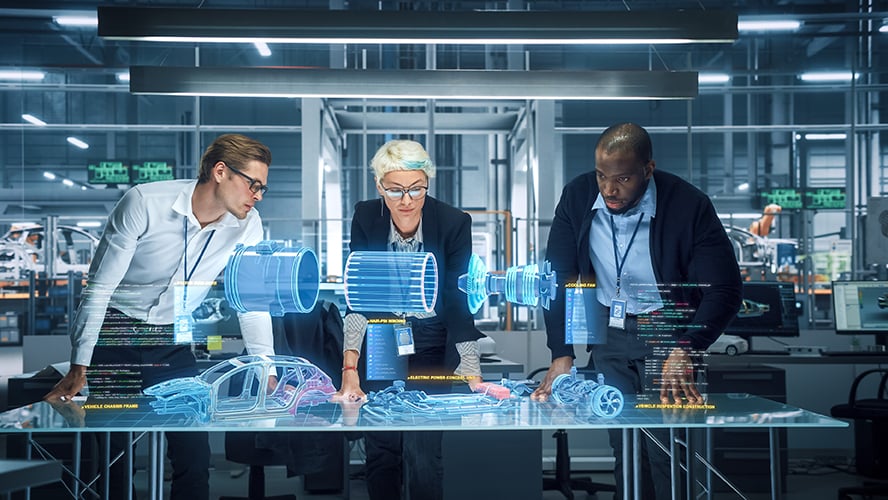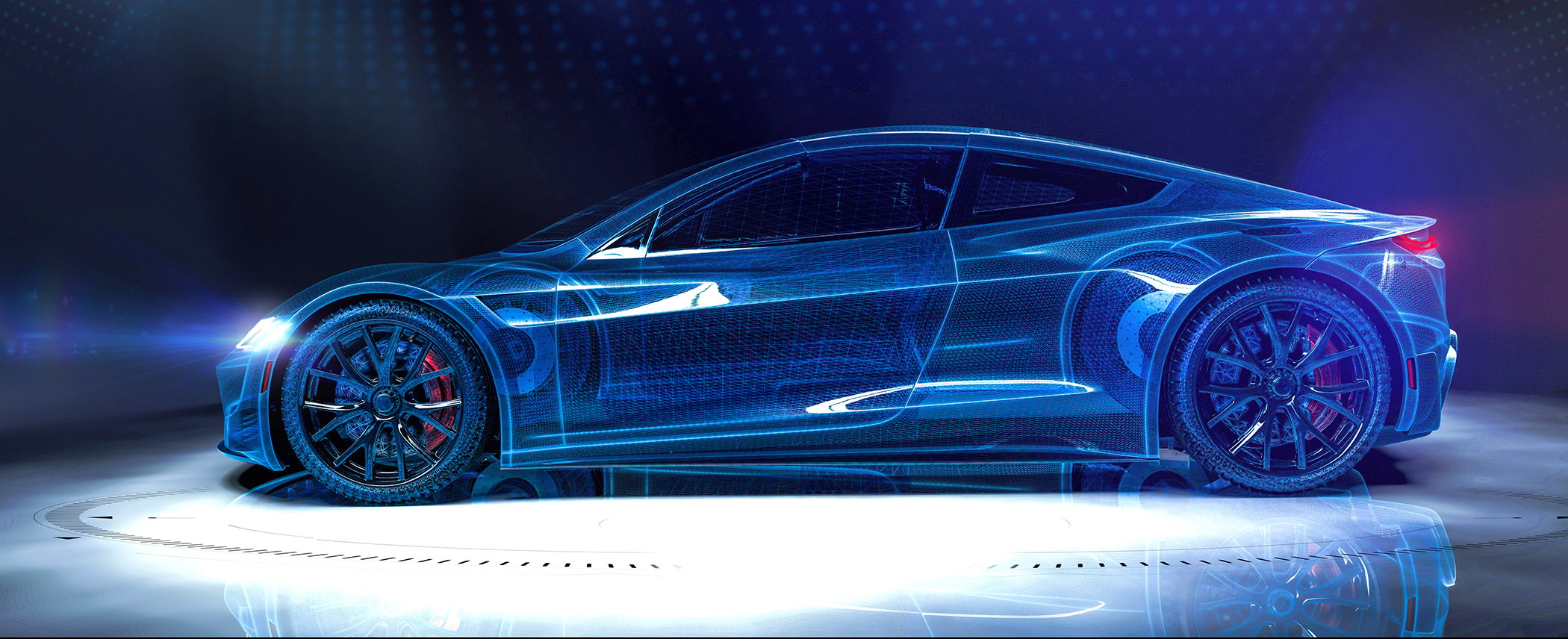Hirose's Role in Advancing LiDAR Technology for ADAS
LIDAR (Light Detection and Ranging) systems are used in many applications for their ability to measure distances and create detailed 3D maps of environments accurately. From topographic mapping to construction and civil engineering to virtual Reality and gaming, LIDAR's versatility has led to widespread adoption. This adoption now includes autonomous vehicles. LIDAR provides real-time, high-resolution 3D maps of the surroundings to enable navigation and obstacle detection.
Driving Reliability and Innovation in ADAS with Hirose's LiDAR Connectors
While LIDAR is a powerful sensor system for autonomous vehicles, it is often used in conjunction with other sensors, such as cameras, radar, and ultrasonic sensors, to create a comprehensive and redundant sensor suite that ensures safety and reliability in a variety of driving conditions. Advances in LIDAR technology, including range, resolution, and cost improvements, continue to drive progress in developing autonomous vehicles.
Connector solutions play a crucial role in enabling the implementation of LIDAR (Light Detection and Ranging) technology in autonomous vehicles. The connectors are responsible for establishing and maintaining the electrical and data connections between various LIDAR components, such as the LIDAR sensor units and the vehicle's processing systems.

LIDAR In Automotive Applications
LIDAR is a crucial component in the sensor suite of autonomous vehicles. LIDAR sensors emit laser beams in multiple directions, and by measuring the time it takes for the laser pulses to return after hitting objects, the system can create a detailed 3D map of the environment. LIDAR technology is used in autonomous vehicles for:
Obstacle Detection & Avoidance
- LIDAR data can classify objects for obstacle detection and avoidance, including other vehicles, pedestrians, cyclists, and more. This information is vital for the vehicle's decision-making process, enabling the vehicle to navigate through complex urban and high-way environments safely.
Mapping & Route Planning
- LIDAR helps create detailed maps of the surroundings, which are essential for the vehicle to understand its location and navigate safely. By comparing real-time LIDAR data to pre-existing maps, the vehicle can accurately determine its position and make decisions on the safest and most efficient route.
Lane Detection & Driver Assistance
- LIDAR can be used in conjunction with other sensors to identify lane boundaries and assist in maintaining proper lane position, crucial for highway driving and navigation.
Traffic Sign & Signal Recognition
- LIDAR and other sensors contribute to recognizing and interpreting traffic signs and signals, allowing the vehicle to respond appropriately to changing road conditions.
Adaptive Cruise Control
- LIDAR helps maintain a safe following distance from other vehicles by continuously sensing the distance and relative speed of objects in the vehicle's path.
Parking Assistance
- LIDAR assists in parking by providing accurate distance measurements to nearby objects, helping the vehicle park safely in tight spaces.
Low-Light & Adverse Weather Performance
- Unlike other sensors, LIDAR performs well in low-light conditions and is less affected by adverse weather such as rain, snow, or fog. This enhances the reliability of the autonomous vehicle's perception system.

Connectivity Requirements
Autonomous vehicle LIDAR systems impose specific performance requirements on connector solutions to ensure the reliable and efficient operation of the technology. This includes:
High Data Transfer Rates
- LIDAR systems generate large volumes of data, particularly in 3D point cloud formats. Connectors must support high-speed data transfer to efficiently transmit this data between LIDAR sensors and the vehicle's processing unit.
Low Latency
- Low-latency connections are critical for real-time processing of LIDAR data. Connectors should minimize delays in data transmission to enable quick decision-making by the vehicle's control system.
Reliability and Robustness
- Autonomous vehicles operate in diverse and challenging environments. Connector solutions must be reliable and robust, capable of withstanding vibrations, temperature extremes, and exposure to moisture without compromising performance. IP-rated connectors must be designed for long-term use and capable of withstanding a high number of mating/unmating cycles. The durability of connectors is essential for minimizing maintenance needs and ensuring the longevity of the LIDAR system.
Compact Design
- Space efficiency is crucial in the design of autonomous vehicles. Connectors should be compact and lightweight, allowing for easy integration into the vehicle's structure without taking up excessive space.
High Power Handling Capacity:
- LIDAR sensors require a stable and sufficient power supply. Connectors must be able to handle high power levels without overheating or causing electrical issues, ensuring the reliable operation of the LIDAR system.
EMC Compliance:
- Electromagnetic Compatibility (EMC) is crucial to prevent interference with other electronic components in the vehicle. Connectors should be designed to minimize electromagnetic emissions and provide effective shielding against external interference.
Compatibility and Standardization:
- Connector solutions must adhere to industry standards to ensure compatibility between different LIDAR systems and vehicle models. Standardization facilitates interoperability, simplifies integration, and promotes widespread adoption.
Ease of Installation and Maintenance
- Connectors should be designed for easy installation and maintenance. This simplifies the assembly and disassembly processes, minimizing downtime and reducing the complexity of maintenance tasks.
Meeting these performance requirements is essential to ensure the seamless integration and operation of LIDAR systems in autonomous vehicles, contributing to the overall safety and reliability of autonomous driving technologies.

Solutions
The choice of connectors in autonomous vehicle designs can vary based on the specific LIDAR application. However, several types of connectors are commonly used in LIDAR technology due to their compact size, durability, and versatility. Here are some of the connector types often found in LIDAR sensor designs:

Board-to-Board Connectors
- LIDAR systems often consist of multiple modules or sensor units distributed across the vehicle. Board-to-board connectors are used for internal connections within the LIDAR device to establish electrical connections between these modules, allowing them to work in concert to provide comprehensive 3D mapping and perception of the surroundings. They come in various versions, such as the FX23/FX23L floating BtB connectors that combine high speed transmission with ±0.6mm floating range. 3A power contacts are provided to reduce the number of positions. Stacking height variations from 8 to 30 mm are available to suit your equipment design.
- The world's smallest floating BtB connector, the BM54 Series has a generous floating amount of ±0.4mm in the XY direction, yet is compact with 3.8mm width. Floating also improves assembly work efficiency by absorbing board misalignment.
- The DF40T Series flexible printed circuit (FPC) connector offers up to 16 Gbps and is PCI Express 4.0 compliant. The unique terminal structure ensures high contact reliability and retention force, and using ribs to absorb impact stress enhances durability.
Wire-to-Board Connectors
- Often used to connect wires to the device's internal circuitry, wire-to-board connectors like the One Action FH™ Series zero insertion force (ZIF) connectors simplify the mating process (easy mating with only one hand), while keeping the benefits of the actuator-style ZIF connectors (improved retention force and the ability to unmate the connector via the actuator). The One Action allows for contactless mating in tight spaces. On average, the mating time for a typical front style flip lock connector is about 3 seconds. The One Action connector greatly simplifies the mating process and reduces the average mating time to 1 second or less. For high-volume production by trained operators, this simplified process saves both time and money.
- Compatible with 28AWG wire, the1.0 mm pitch GT50 Series is the smallest automotive WtB connector on the market. Having passed rigorous environmental testing, the GT50 can withstand 125°C ambient temperature and 25N of retention force. A two-point contact design minimizes the effects of vibration and dust intrusion. The position of the cable crimp area is optimized, and a stabilizer prevents the contacts from moving inside the housing, ensuring strong vibration resistance even in harsh automotive environments.
- The ZE05 Series is a low-profile wire-to-board connector for high heat and high vibration applications, including automotive, off-highway, and transportation. Combining a space-saving design with high heat resistance up to 125°C, the 2mm pitch ZE05 Series connector maintains high electrical conductivity even in severe heat environments. A double spring, three-point contact design with minimal clearance ensures a consistent, highly reliable connection in high vibration conditions.
Coaxial Connector
- The shielded GT43 Series high-speed wire-to-board connector combines a compact, space-saving design with noise-resistance. The external current flow on the shield case enables a shorter path to the GND plane, such as the board, for enhanced noise resistance. Offering high frequency characteristics up to 3GHz, the GT43 Series supports Low Voltage Differential Signaling (LVDS) applications.

Conclusion
Innovative connectors from Hirose Electric help address autonomous vehicle challenges including implementing LIDAR technology. Hirose extensive product offering combines small-size and high-speed transmission capability with unique contact designs to offer design flexibility. When you choose Hirose Electric as your connector partner, you're not just selecting a connector, you're investing in a solution that solves your design challenges and contributes to success.
connection point
Welcome to 'Connection Point' - your go-to spot for the latest in electronics. Here, we're all about connecting you with fresh ideas, engaging stories, and innovative solutions from Hirose Electric. Whether you're a tech enthusiast or an industry professional, there's something here for everyone.
Don't miss out on any of our updates – subscribe now and join our community of innovators and thinkers.
For more information on how Hirose Electric's connectors can transform your wearable device design, visit hirose.com or contact our team of experts today.
